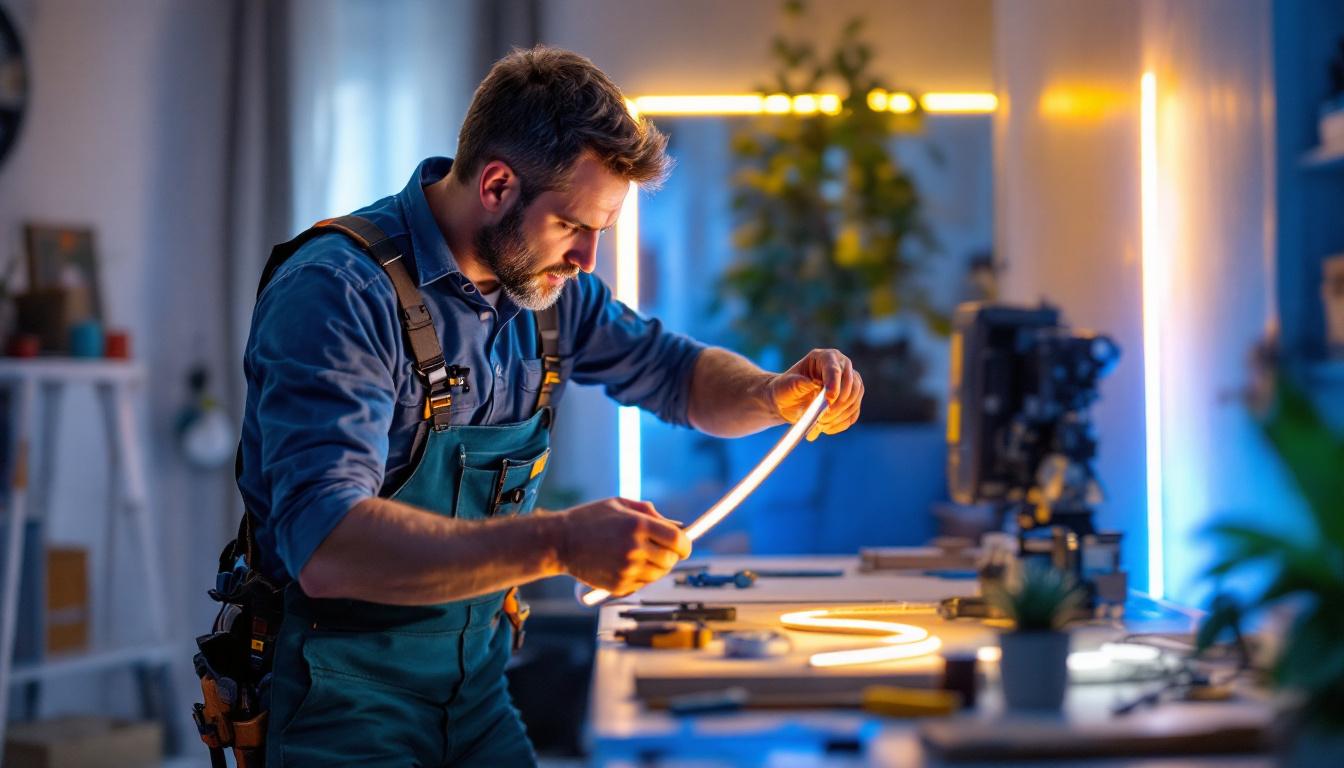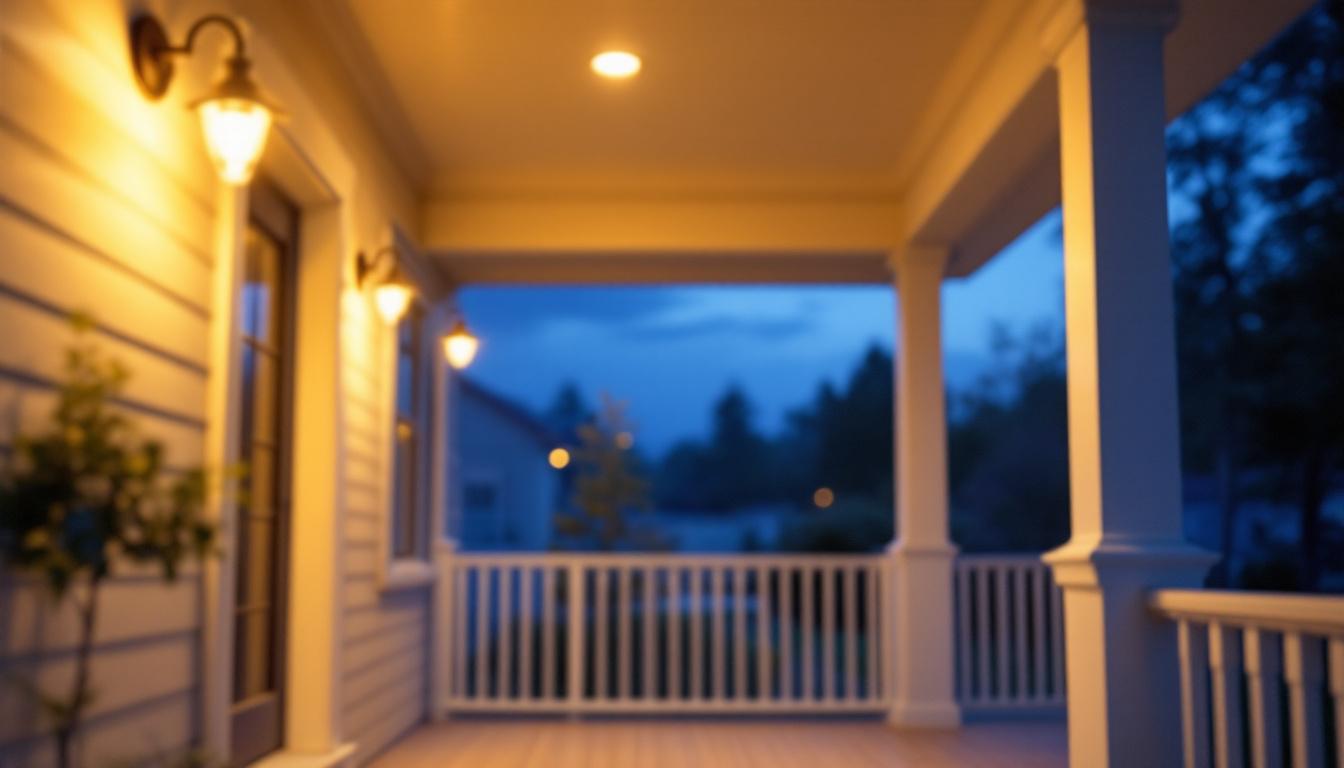
Lighting contractors are witnessing a transformative shift in the lighting industry with the advent of Photobio LED technology. Unlike traditional LEDs that focus primarily on illumination efficiency and color rendering, Photobio LEDs integrate biological principles to influence human health and well-being through light. This emerging technology leverages the science of photobiology—the study of how light interacts with living organisms—to deliver lighting solutions that extend beyond mere visibility.
Understanding the science behind Photobio LEDs is essential for lighting contractors aiming to provide cutting-edge, health-conscious lighting systems. As demand for human-centric lighting grows in commercial, residential, and healthcare environments, contractors equipped with this knowledge can better advise clients, optimize installations, and differentiate their services in a competitive market.
Photobio LEDs are designed to mimic natural light patterns, which can significantly impact mood, productivity, and overall well-being. For instance, these lights can adjust their color temperature throughout the day, promoting alertness during work hours and relaxation in the evening. This dynamic lighting approach aligns with circadian rhythms, helping to regulate sleep cycles and enhance mental clarity. As more research highlights the connection between light exposure and mental health, the role of Photobio LEDs in creating supportive environments becomes increasingly vital.
Moreover, the implementation of Photobio LED technology is not limited to indoor spaces. Outdoor applications, such as street lighting and public parks, can also benefit from this innovative approach. By utilizing Photobio LEDs in these settings, cities can create safer and more inviting spaces that encourage community interaction and well-being. Additionally, the energy efficiency of these LEDs contributes to sustainability goals, making them an attractive option for municipalities looking to reduce their carbon footprint while enhancing the quality of life for residents.
Photobiology explores how light affects living organisms at molecular, cellular, and systemic levels. In humans, light exposure regulates circadian rhythms, hormone secretion, mood, and cognitive function. The discovery of intrinsically photosensitive retinal ganglion cells (ipRGCs) in the eye, which respond primarily to blue light wavelengths, has revolutionized understanding of how light influences biological processes beyond vision. These cells play a crucial role in non-image-forming visual functions, such as the regulation of sleep-wake cycles and seasonal biological rhythms, underscoring the profound impact that light has on our overall well-being.
Light is composed of a spectrum of wavelengths, each with distinct biological effects. Blue light (approximately 460–480 nm) plays a pivotal role in suppressing melatonin production, thereby promoting alertness and wakefulness. Conversely, exposure to warmer, redder light in the evening supports melatonin synthesis, facilitating restful sleep. Photobio LED technology harnesses these spectral nuances to create lighting that aligns with human circadian rhythms. This technology not only enhances the aesthetic appeal of spaces but also contributes to the physiological and psychological health of individuals who inhabit them.
For lighting contractors, appreciating these spectral effects is critical. It enables the design and installation of lighting systems that not only illuminate spaces but also enhance occupant health and productivity by mimicking natural light cycles. Furthermore, the integration of tunable white LEDs allows for dynamic adjustments throughout the day, adapting to the changing needs of occupants. This adaptability can lead to improved concentration in work environments and a more relaxing atmosphere in residential settings, demonstrating the versatility and importance of photobiological principles in modern lighting design. As research continues to unveil the intricate connections between light and health, the potential for innovative applications in various fields, including healthcare and education, becomes increasingly apparent.
One of the hallmark features of Photobio LED systems is dynamic spectral tuning—the ability to adjust light spectrum and intensity throughout the day. This mimics natural daylight progression, supporting circadian regulation. For example, a Photobio LED fixture might emit higher blue light content in the morning to stimulate alertness, then gradually shift to warmer tones in the evening to promote relaxation.
Lighting contractors should understand the control mechanisms behind these systems, which often involve sophisticated drivers and programmable controllers. Integration with building management systems can enable automated adjustments based on time, occupancy, or environmental sensors.
While biological effects are paramount, Photobio LEDs also deliver superior color rendering, ensuring that spaces are visually appealing and functional. High color rendering index (CRI) values combined with tailored spectral outputs minimize glare and eye strain, improving occupant comfort. This dual focus on biological impact and visual quality distinguishes Photobio LEDs from conventional lighting solutions.
Photobio LED technology maintains the inherent energy efficiency of LEDs, often achieving significant reductions in power consumption compared to traditional lighting. Additionally, these systems are designed for longevity, reducing maintenance costs and downtime. For contractors, this translates to value-added installations that meet client demands for sustainability and cost-effectiveness.
In office environments, lighting profoundly influences employee productivity, alertness, and well-being. Studies have shown that exposure to blue-enriched light during work hours can improve concentration and reduce fatigue. Photobio LED systems enable lighting contractors to create adaptive lighting environments that support these outcomes, enhancing workplace satisfaction and performance.
Moreover, dynamic lighting can be programmed to reduce blue light exposure toward the end of the day, helping employees transition to rest mode after work. This holistic approach to lighting design is increasingly sought after by corporate clients focused on employee wellness.
Healthcare settings benefit immensely from Photobio LED lighting. Patients’ recovery and sleep quality are closely tied to circadian rhythm regulation, which can be disrupted by conventional artificial lighting. Photobio LEDs provide tailored lighting that supports healing processes, reduces delirium in intensive care units, and improves staff alertness during night shifts.
Lighting contractors working in healthcare must collaborate closely with facility managers and clinical teams to implement lighting solutions that meet stringent health and safety standards while delivering biological benefits.
Lighting in schools and universities impacts student concentration, mood, and overall learning outcomes. Photobio LED systems can be programmed to provide stimulating blue-enriched light during morning classes and warmer light during breaks or late afternoon sessions. This modulation supports cognitive function and reduces eye strain, creating an optimal learning environment.
Contractors specializing in educational facilities should consider integrating Photobio LEDs with daylight harvesting and occupancy sensors to maximize energy savings and user comfort.
Homeowners increasingly seek lighting solutions that promote health and relaxation. Photobio LEDs offer customizable lighting scenes that adjust automatically to daily routines, supporting natural sleep-wake cycles. For example, morning light can be bright and blue-enriched to encourage wakefulness, while evening light shifts to warmer hues conducive to winding down.
Lighting contractors can leverage this technology to offer smart home lighting packages that enhance lifestyle quality and appeal to health-conscious consumers.
Successful implementation of Photobio LED systems begins with a thorough assessment of client objectives, space usage patterns, and occupant demographics. Contractors should gather information on typical occupancy hours, lighting preferences, and any health-related concerns to tailor lighting solutions appropriately.
Understanding the architectural and interior design elements is also crucial, as surface reflectance and room geometry influence light distribution and effectiveness.
Photobio LED fixtures often require advanced control systems capable of dynamic spectral tuning and intensity modulation. Lighting contractors must ensure compatibility with existing electrical infrastructure and building automation systems. Familiarity with protocols such as DALI (Digital Addressable Lighting Interface) and wireless controls enhances integration flexibility.
Training on programming and commissioning these systems is essential to deliver optimal performance and client satisfaction.
Contractors must stay informed about relevant lighting and health standards, such as WELL Building Standard and LEED certification criteria, which increasingly emphasize circadian lighting and occupant well-being. Compliance not only ensures safety and quality but also adds value to installations by aligning with sustainability and wellness initiatives.
Photobio LED systems, while durable, require periodic maintenance to sustain performance. Contractors should educate clients on maintenance schedules and provide support for troubleshooting control systems. Establishing service agreements can foster long-term client relationships and recurring business opportunities.
The convergence of Photobio LED technology with smart building systems and the Internet of Things (IoT) is opening new frontiers in personalized lighting. Sensors that monitor occupancy, ambient light, and even biometric data enable real-time adjustments that optimize biological effects and energy use. Lighting contractors who embrace these innovations can offer highly customized solutions that anticipate occupant needs.
As awareness of the health impacts of lighting grows, demand for Photobio LED solutions is expanding across sectors. From corporate wellness programs to senior living communities, opportunities abound for contractors to position themselves as experts in human-centric lighting design and installation.
Ongoing research continues to refine understanding of light’s biological effects, driving improvements in LED materials, spectral tuning capabilities, and control algorithms. Contractors who stay abreast of these developments can leverage emerging products and techniques to enhance their service offerings.
Photobio LED technology represents a significant evolution in lighting, blending scientific insights with practical applications to improve human health and comfort. For lighting contractors, mastering the science and implementation of Photobio LEDs is a strategic imperative that unlocks new business opportunities and elevates the quality of lighting solutions delivered to clients.
By understanding the biological foundations, key system features, application contexts, and installation considerations, contractors can confidently guide clients through this innovative lighting landscape. Embracing Photobio LED technology not only meets growing market demands but also contributes to healthier, more productive environments across residential, commercial, healthcare, and educational settings.
Ready to harness the transformative power of Photobio LED technology for your next project? At LumenWholesale, we provide lighting contractors with the highest quality, spec-grade lighting products at unparalleled wholesale prices. Our commitment to excellence ensures that you have access to the most innovative and reliable lighting solutions, including the latest in Photobio LED systems. Say goodbye to inflated markups and hello to premium lighting with the convenience of free shipping. Elevate your lighting installations with the best value in the industry. Wholesale Lighting at the Best Value awaits you at LumenWholesale. Make the smart choice and partner with us for your lighting needs today.

Discover the transformative potential of flexible LED strips for lighting contractors.

Discover the history of LED lights and learn how embracing this innovative technology can transform your lighting contracting business.

Discover the benefits of box recessed lighting and how it can transform your home into an energy-efficient haven.

Discover why outdoor porch lighting is a crucial consideration for lighting contractors.